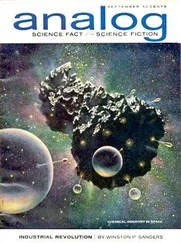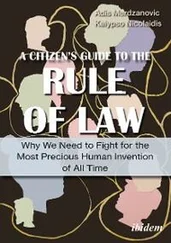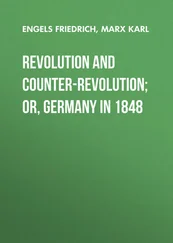By the end of 1986 the war had blossomed into a grotesque Disneyesque spectacle of U.S.-sponsored terrorist training. The border along Pakistan was swimming in money from the American sugardaddy as volunteers from around the Arab world all tried to muscle in on the Russian slaughter. And Osama bin Laden had taken up permanent residence in Peshawar, the center of the Afghan war effort in Pakistan. Alarm bells failed to ring at the CIA. In fact, they welcomed the new additions to the mujahideen. Guns for everyone.
Looking to get closer to the action, bin Laden moved his operation into Afghanistan. In April 1987 the Soviets attacked his hideout in the mountains just inside the border. His soldiers held on bravely, and bin Laden sustained a slight foot injury. After a few days he and the survivors withdrew to Pakistan. Several journalists chronicled the fight, and bin Laden succeeded in turning this small battle into a public relations bonanza. He toured the Arab world with exploits of his fighters’ bravery and quickly became the face of the Islamic jihad against invaders, Soviet or otherwise. Young men willing to die for him flocked to his banner. Massoud fought on in anonymity.
Later in 1987, Soviet foreign minister Eduard Shevardnadze secretly told U.S. secretary of state George Shultz they wanted to withdraw from Afghanistan. Shevardnadze asked for U.S. help, however, as they believed the Islamists were becoming too strong and posed a threat to the Soviet control of their Islamic republics. In exchange for a quick exit, they asked the United States to stop supporting the rebels. Here was a golden moment: the Americans had a chance for a double victory. They would get more than they ever dreamed out of Afghanistan, not just a Soviet bloody nose but also an outright defeat. And, they would get the cooperation of the Soviets in controlling the rise of the Islamic fundamentalists. The kind of help that would possibly cut the threat off before it became serious. The Americans, however, doubted the sincerity of the Soviets. They were blind to any other threats and rejected the Soviet offer, holding on to their knee-jerk view of the world. So entrenched was this knee-jerk thinking that Robert Gates, who took over the CIA after Casey’s 1986 death, bet $25 that the Soviets would not withdraw from Afghanistan within a year.
In 1988 Gorby proved Gates wrong. Rather than agree to cut support for the rebels once the Soviets left, the United States sped up arms deliveries. In Moscow the new policy of glasnost , or openness, allowed longtime dissident Andrei Sakharov to publicly denounce the Afghan war as a criminal adventure. Gorby’s cool draft of honesty had turned into a cyclone of white heat. Other parts of the Soviet Empire took note.
Once the Russians started pulling out, the issue became who would run postwar Afghanistan. The CIA predicted the Soviet-backed leader Najibullah would quickly collapse. To prepare for this they did nothing. Even after Zia died in August 1988, the CIA continued to support his pro-Islamic policies while the Islamic radicals stood poised to snatch power in Afghanistan.
October 1988 saw a leading CIA officer from Afghanistan, Ed McWilliams, deliver his critique to Washington. The report stated that all the money the United States had spent had been hijacked by the Pakistani ISI and used to create a powerful Islamic fundamentalist movement ready to seize Afghanistan and turn it into an anti-American Islamic state. The CIA leaders, angered at his conclusions, recalled McWilliams and tried to sabotage his career.
Soviet troops continued to roll north out of Afghanistan throughout that year. By February 1989 only a handful remained. On February 15, the final vehicles stopped on the Termez Bridge, and Gen. Boris Gromov, commander of the Fortieth Army, left his tank and walked to the Soviet Union into the arms of his son while the international media watched. What began secretly in the dark rooms of the Kremlin died in the open, a stunning display of the changes Gorby’s cyclone had wrought. The trusted playbook had been torn up, the Brezhnev Doctrine shredded, and those living under the thumb of the Soviet army everywhere no longer feared the tanks.
Once the Soviets left, the Americans followed, quickly losing interest in the venture without the fun of killing Russians. They abandoned Massoud and the other rebels, and mentally blackholed the entire area. After dominating the CIA’s thinking for years, once the Soviets pulled out the United States left the whole situation for Pakistan to deal with. Najibullah hung on for three years without his Soviet backers.
By the end of 1989, the Russians soon realized they had lost more than Afghanistan. Throughout Eastern Europe, people who had lived in fear of Soviet tanks stood astride the Berlin Wall, whacking it with sledgehammers. The invincible Red Army and the Soviet empire died in the snowy mountains of Afghanistan, and the Soviet Union slipped under the waves two years later. Meanwhile, champagne flowed at CIA headquarters, its leaders too drunk on success to understand the danger of the mujahideen factory they had built. Massoud planned his attacks on Kabul. Bin Laden trained his troops at American-built bases and honed his recruitment videotapes. The final struggle of the Cold War was over.
Two superpowers fought. The Russians knew they had lost. The Americans thought they had won.
In 1986 William Casey suffered a brain seizure and died. Robert Gates claimed Casey’s final words were argh… argh… argh. Two years later Zia, still firmly in control of Pakistan and now one of the most important allies of the United States, died when his private plane crashed, also killing the head of Pakistan intelligence and the U.S. ambassador to Pakistan. While initially foul play was suspected, it was later shown to be an accident.
The Lion survived the war and became a major figure in postwar Afghanistan. Massoud held on as one of the most powerful leaders, and when the Taliban began their sweep through the country in 1994, he retreated to the north where he became the military commander of the Northern Alliance and the sole effective fighter against the Taliban and their al Qaeda allies. Then, during an early weekend in September 2001 he entertained some journalists who turned out to be assassins sent by Osama bin Laden. Their bomb ripped through Massoud. He survived long enough to die on a helicopter taking him to a hospital in nearby Tajikistan. Two days later bin Laden’s minions turned their wrath on the World Trade Center and the Pentagon.
FOURTEEN.
THE FALKLAND ISLANDS WAR: 1982
War at its most basic. No grand principles at play, the great driving force behind twentieth-century wars. Instead, this war was about nationalistic macho: who had more of it and who was going to get pushed around. In an age of aircraft carriers, supersonic jets, and high-tech missiles, it was as meaningless as a schoolyard fight.
Sometimes when one country’s nationalism rubs up against another country’s, conflict breaks out. Historically, few countries have been as vigorous defending their nationalism as Great Britain. Sneeze wrong on one of its outposts and you can expect a nasty letter from the Queen. When the Argentines grabbed the useless islands in 1982, the British didn’t hesitate to sail a big chunk of their navy to the other end of the world to take back the Falklands. The world was shocked, none more than the leaders of the invading Argentine junta, because their citizens were among the few people who knew where the Falklands were and among the even fewer number who cared. At the height of the Cold War, the world was treated to the sad spectacle of a shooting contest between two countries that really had nothing to fight about. And oddly, there was not a Communist anywhere in sight.
Читать дальше












